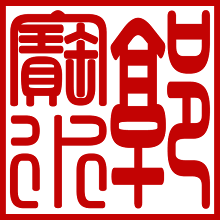Perubahan nada (modified tones) 变调【biàn
diào】1
The modified tone of the third tone. Happening if two syllable be
joined and if the first syllable is the third tone, this third tone will be
modified.
Perubahan dari nada tiga. Saat dua suku kata digabungkan dan kalau
suku kata pertama adalah nada tiga, maka nada tiga itu akan mengalami
perubahan.
上声的变调。两个音节相连,前一个音节是上声时,这个上声受到它后面的音节声调的影响而发生变调,解释如下:
1. nada 3 dan nada 3 (third
tones and third tones)
上声与上声【shàng
shēng yǔ shàng shēng】
双音节:上声+上声 >>
阳平+上声([2 1
4]+[2 1 4] >> [3 5]+[2 1 4])
Ex:手表【shǒu
biǎo >> shóu biǎo】、水果【shuǐ guǒ >> shuí guǒ】、可以【kě
yǐ >> ké yǐ】、理解【lǐ jiě >> lí jiě】。
三音节的结构在语流中最末一个字仍保留上声的读法,前面的上声字都变读。由于内部结构的组合层次不同,前两字的变调读法不同:
2 + 1结构:
{[3 5] + [3 5]} + [3 5] >> [3 5] + [3 5] + [2 1 4]。
Ex. 如: 展览馆【zhǎn
lǎn guǎn >> zhán lán guǎn】、首长好【shǒu zhǎng hǎo >> shóu
zháng hǎo】、手写体【shǒu xiě tǐ >> shóu xié tǐ】
1 + 2结构:[3 5] + {[3 5] + [3 5]} >> [2 1 1] + [3 5] + [2 1 4]
Ex. 如:打草稿 小组长 买保险
2. nada tiga dan nada
lain (third tones and the other tones)
上声与非上声【shàng
shēng yǔ fēi shàng shēng】
[2
1 4] >> [2 1]
Ex. 如:老师 讲课 起来
In this condition the
first syllable of third tones will become half tones.
Disini nada tiga yg
pertama berubah menjadi setengah nada.
上声变成半三声。
3. nada tiga dan nada
kosong (third tones and empty tones)
上声与轻声【shàng
shēng yǔ qīng shēng】
[2 1 4] >> [2 1 1]
NB:THE
MODIFIED TONES ONLY AFFECTED WHEN WE READ IT AND WILL DON`T HAVE ANY EFFECT
WHEN WE WRITE DOWN.
PERUBAHAN NADA HANYA BERLAKU SAAT DIBACA, TIDAK PADA SAAT DITULIS.
只有读出来才有变调,写下来没有任何变化。

No comments:
Post a Comment
Just feel free to comment or ask anything my friend.
help us to improve this blog for the benefit of anyone who want to learn Chinese.
i`ll always try the best to answer or reply your comment as soon as possible ^.^